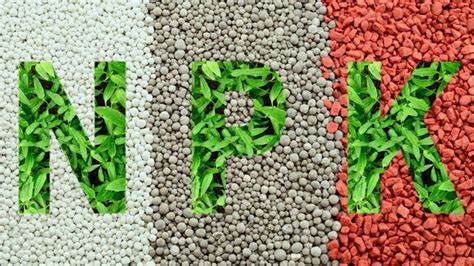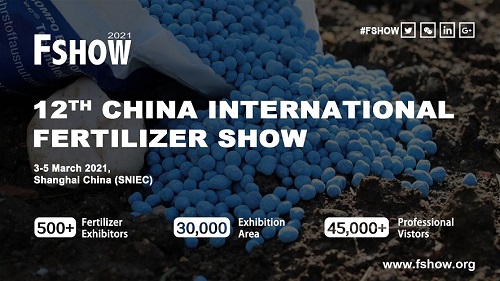
Exhibition time: 17-19 March, 2025 Shanghai, China
 中文
中文

Exhibition time: 17-19 March, 2025 Shanghai, China
 中文
中文
Takeaway: Delicate seedlings need a little extra attention and knowledge to help them grow big and strong. Follow Kate Van Druff’s advice on growing conditions, nutrients, and fertilizer to get your seedlings to the next level.
Few things about gardening are as gratifying as watching a tiny seed become a flourishing plant. Flowers, herbs, fruit, vegetables, ornamentals — the possibilities of what you can grow are endless and the journey is memorable year after year.
Many variables come into play as simple seeds start their lifecycles. Starting seeds indoors or outside relies on factors such as the climate and natural or artificial lighting conditions. The timing of planting also comes into play, where seedlings started indoors too early in the season and without suitable lighting can become leggy and thin rather than healthy and robust. Of course, the selected planting medium can also impact the quality of the seedlings you grow, where some potting mixes contain nutrients right from the start and others are merely, well, dirt.

Finding the perfect balance of growing conditions and nutrients isn’t always easy.
his article will help you to discover the best nutrients and fertilizers for your seedlings and when you should apply them.
Introducing fertilizers and nutrients for seedlings can boost growth and production for your plants. Plants require many different nutrients to thrive, particularly oxygen, hydrogen, carbon, which they get through water and air, as well as potassium, phosphorus, and nitrogen, which need to be added through fertilization. These key nutrients tend to be the most important, but you’ll also want to consider micronutrients that can also fortify your seedlings for their best potential.
As the single most important nutrient for plants, nitrogen is responsible for plant growth, and more specifically leaf growth, plant size, and overall health. Plants supplied with sufficient nitrogen will grow strong and quickly. Nitrogen also plays a key role in photosynthesis, serving as a component of the chlorophyll molecule that makes plants green. As seedlings grow into larger plants, the demand for nitrogen also grows.

Also vitally important, phosphorus aids plants in creating strong roots, making seeds, and producing fruit, vegetables, and flowers. Phosphorus also aids in photosynthesis by facilitating the plant’s energy transfer and allowing plants to use or store energy. Demand for this nutrient is greatest during seed germination and early life, as well as during fruiting or flowering. General weakness and stunted growth are two signs of phosphorous deficiency in plants.
The next most essential plant nutrient after nitrogen, potassium helps with many aspects of plant growth and development, such as a plant’s size, shape, and color, not to mention the taste of any produce. Adding potassium to the soil helps plants with the protein synthesis process as well as the activation of growth enzymes.
Growth-related issues such as leaf loss, cholrosis (scorching of leaves), weak root systems, and stunted growth may present when plants become too deficient in potassium.
Seedlings and plants also tend to need a large amount of magnesium, calcium, and sulfur. These complete the list of essential macronutrients commonly required for plants and crops.
Calcium – Calcium strengthens plant tissues and helps to neutralize soil and plant acidity. Calcium in the soil also helps improve water penetration and decrease the soil’s salinity.
Magnesium – This nutrient also helps give plants their green color, increasing the intake of phosphorus, increases chlorophyll, and allows better CO2 absorption.
Sulfur – Sulfur helps plants produce seeds and resist disease. This nutrient also promotes growth, production of chlorophyll, and helps in producing proteins, amino acids, and enzymes.
Together, these six essential macronutrients aid in the creation of chlorophyll, which helps plants convert light into energy for photosynthesis. The process of photosynthesis allows plants to take sunlight, CO2, and water and turn them into sugar and oxygen. The glucose created then affords plants the ability to use that energy to grow and repair damage or to store it for later. Better photosynthesis enables plants to be more prolific, with better growth and larger and more bountiful yields. Ensuring proper macronutrient fertilization has a direct impact on plant growth and your future harvest potential.
After you monitor and amend the soil for proper macronutrient content, remember that many diverse nutrients can benefit your plants. As you become a more experienced gardener, you may begin to recognize signs that your plants are craving specific nutrients. You should consider these other key micronutrients to inspire balanced nutrition for your plants.
Boron supports a plant’s membranes in terms of structure and function.
Copper helps in vitamin A production as well as protein synthesis along with other growth processes.
Iron aids in food production, energy transfer, and overall growth, to name a few.
Manganese supports quicker germination, photosynthesis, and aids in various metabolic reactions.
Molybdenum supports nitrogen fixation.
Zinc is especially vital as it supports high yields in crops.
Nickel is essential in urea conversion.
Chloride supports plant energy reactions.
Plants need lesser concentrations of these micronutrients, yet their presence can have a great impact. Even a slight deficiency in one micronutrient can impact a plant’s overall health and growth. Adding organic compost can be an effective way to increase micronutrients in the garden.
The soil where your seeds start can have an impact on the future growth of your plants. Generally speaking, seedlings won’t need their nutrients until their first full set of true leaves sprouts. Those first leaves that emerge, called cotyledons, are actually part of the seed and will deliver nutrients to get the seedlings started. The cotyledons feed the plant, so you don’t necessarily need to start feeding right away.
Once the true leaves appear, you may wish to transfer the seedlings from their current spot to a larger pot or a cell pack. At this point, you can use some potting mix with built-in nutrients, or you may wish to choose your own fertilizer to apply at regular intervals. A diluted, water-soluble fertilizer can deliver essential nutrients for the young plants as they grow. Dissolving fertilizer in water makes it so easy to feed your plants as needed. You can monitor your seedlings to decide if lightly fertilizing once or twice per week works best. Signs of over-fertilizing may include yellowing leaves, slowed growth, wilting, or buildup of salt. If you’ve used a potting mix with nutrients already mixed into the soil, proceed slowly with any additional fertilizing efforts to avoid harming the plants.
Germinate seeds in starter containers or packs. Choose between plain potting medium or nutrient-enriched potting mix.
Plain Potting Mix: After the first set of “true leaves” emerges, apply diluted, water-soluble fertilizer only to seedlings not already fortified with nutrient-rich soil.
For a more organic fertilizer route, consider using nitrogen-rich blood meal, phosphorous-rich bone meal, and potassium-rich kelp meal.
As another natural option, you may also wish to make your own compost.
Nutrient-Rich Potting Mix: When starting from potting mix with added fertilizer, wait six to eight weeks and then supplement the nutrient-rich potting mix with a little fertilizer.
Look for clues that your plants may be craving nitrogen, such as yellowing or slowed growth before adding more fertilizer.
Using too much fertilizer too early on can burn young plants and their roots. It’s best to proceed with caution, adding a little fertilizer at a time and increasing as the plants grow and mature. Remember, you can always add more fertilizer, but you can’t really undo overfertilization.
You may also wish to have your soil tested prior to fertilizing so you know about any nutrient deficiencies that you should work to correct. Your healthy plants and yields will thank you for it!
It may be true that anyone can stick a seed in a bit of soil, add some water and sunlight, and watch it grow. There’s a lot more to it, though. Pay attention each planting season to discover what works best as you familiarize yourself with each different plant you like to grow and which applications produce the best results.
With a solid understanding of nutrients, fertilizers, and growing conditions, you can cultivate stronger, healthier, and more vigorous plants year after year.
From Maximum Yield magazine
